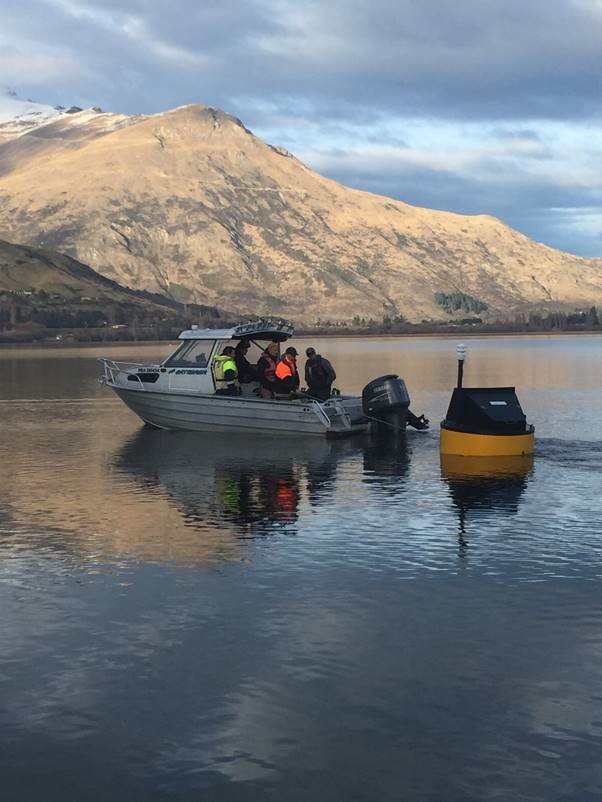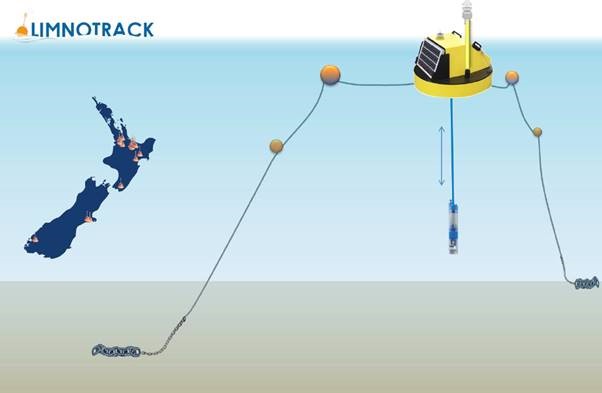The first of its kind in Otago, the buoy was installed today by Otago Regional Council (ORC) and University of Waikato staff and will help to track changes in water quality in Lake Hayes. Two more buoys are also planned for Otago lakes, in Lakes Wanaka and Wakatipu.
The installation of the buoy is part of a wider work programme in Lake Hayes, including a turbidity study at Mill Creek, a catchment study, and upcoming consultation on options for remediating water quality in the lake.
ORC commissioned the University of Waikato to build and install the high-frequency monitoring buoy in Lake Hayes.
“The data from this buoy will greatly improve our understanding of how Lake Hayes is responding to the environment in both the short and long-term, so we can make informed decisions about remediation,” said ORC Environmental Resource Scientist, Rachel Ozanne.
The buoy is an autonomous water quality monitoring system. It has two parts: a weather station mounted above the water, and a water quality sensor package, which uses an electric winch and armoured data cable to raise and lower the sensors throughout the water column.
The top mounted weather station measures data related to climate and weather, including wind speed and direction, air temperature, solar radiation, relative humidity, barometric pressure and rainfall.
The winch-operated sensors move up and down the water column collating data related to water quality, including water temperature, dissolved oxygen, chlorophyll fluorescence, phycocyanin fluorescence, turbidity, pH and conductivity.
“The advantage of this system is that water can be measured at multiple depths up to every 0.1 metre, allowing an understanding of important water column variables such as the vertical distribution of algae,” said Mrs Ozanne.
Mike Hanff, Chairman of the Friends of Lake Hayes Society, said the buoy’s installation was a good development for the community.
“This is a major positive step on the journey ORC is taking with the Friends of Lake Hayes to provide data to assist in measuring remediation of the catchment and the health of our beautiful lake.
“It’s particularly exciting for Friends of Lake Hayes as a piece of technology we’ve long been hoping for.”

The monitoring buoy being towed across Lake Hayes towards its moorings today.

Schematic diagram of Limnotrack’s water column profiling monitoring buoy, and the distribution of Limnotrack’s lake monitoring buoy network in New Zealand.
